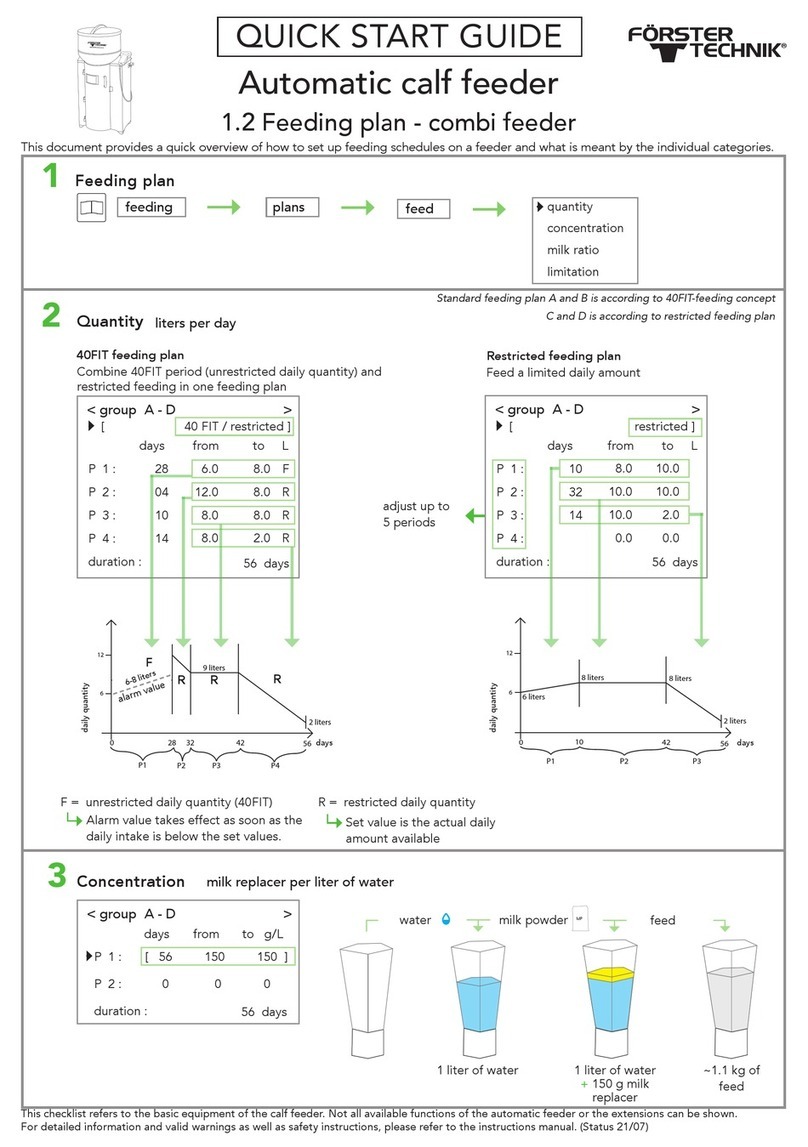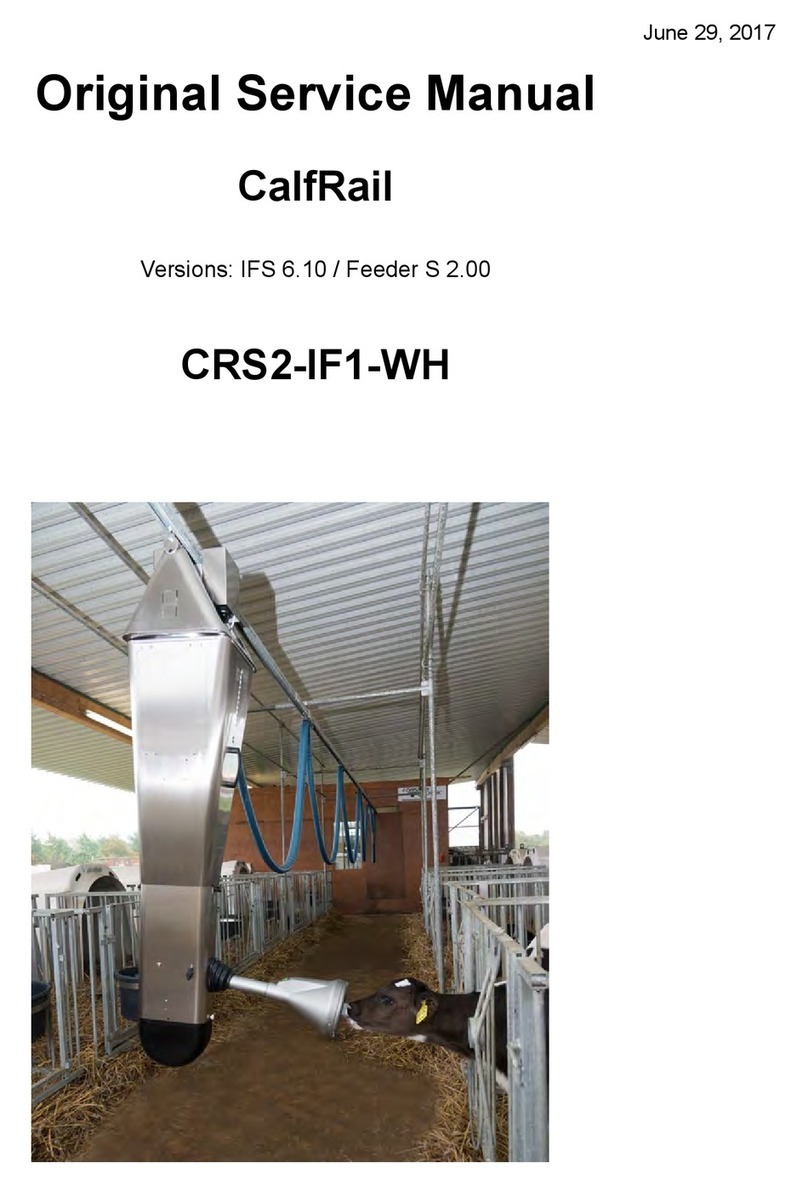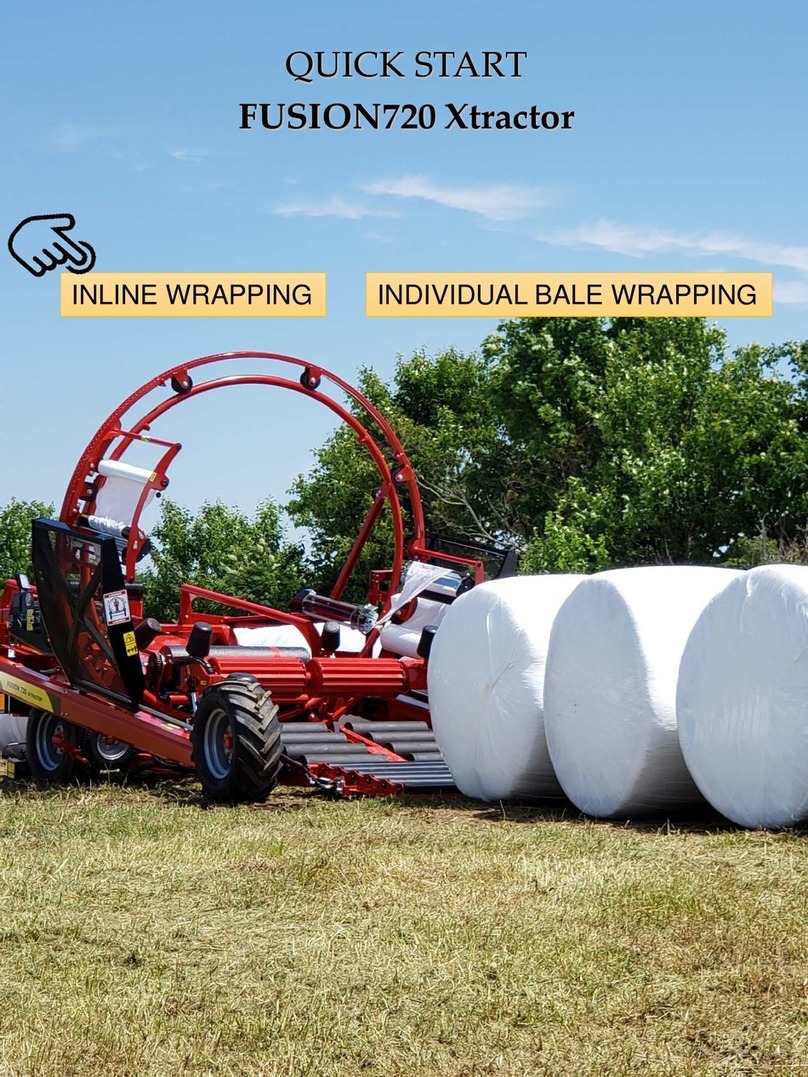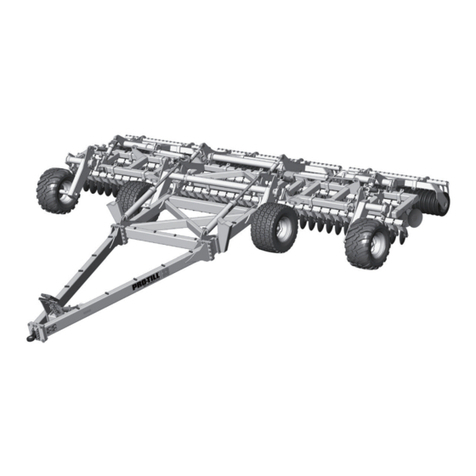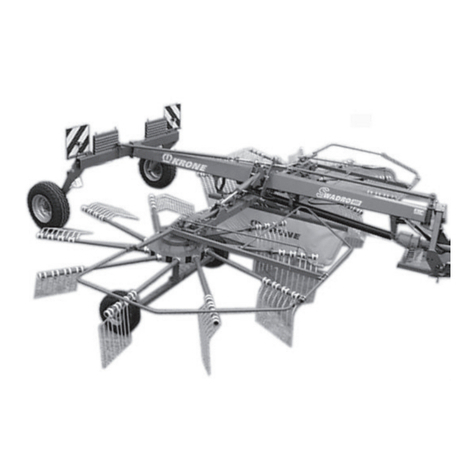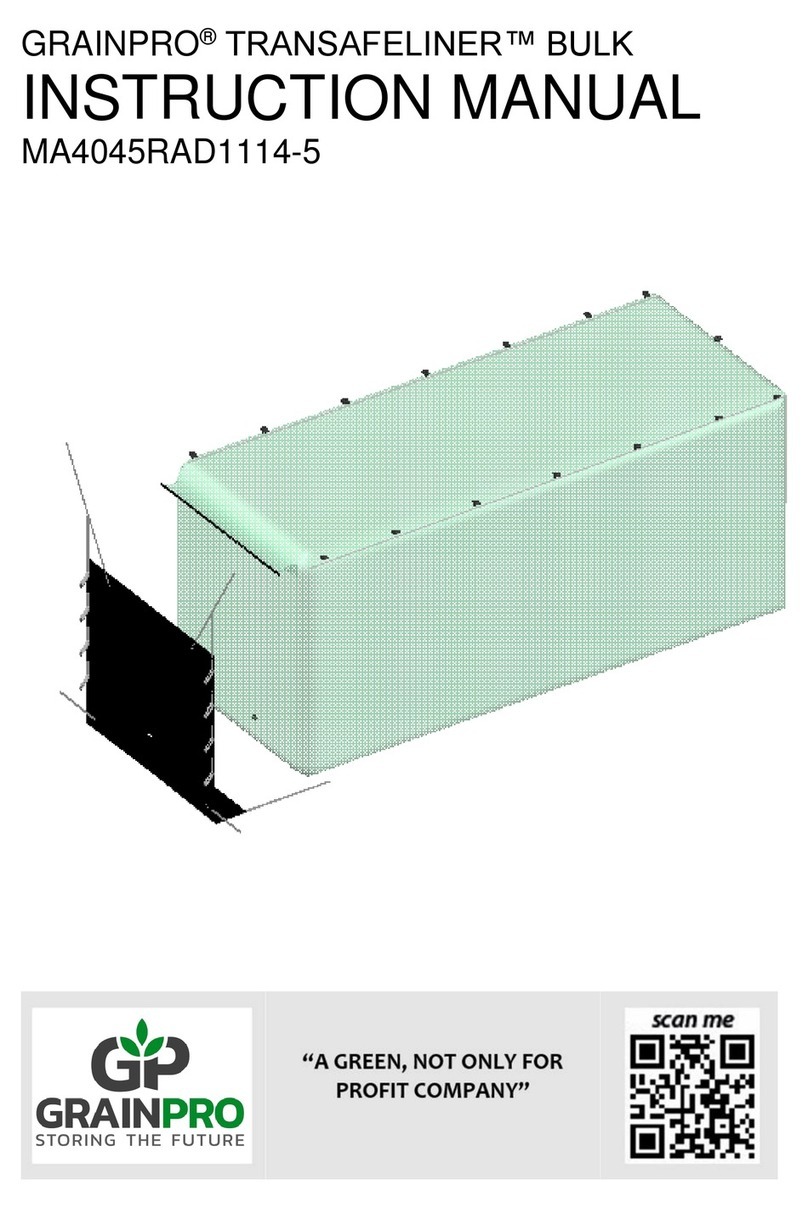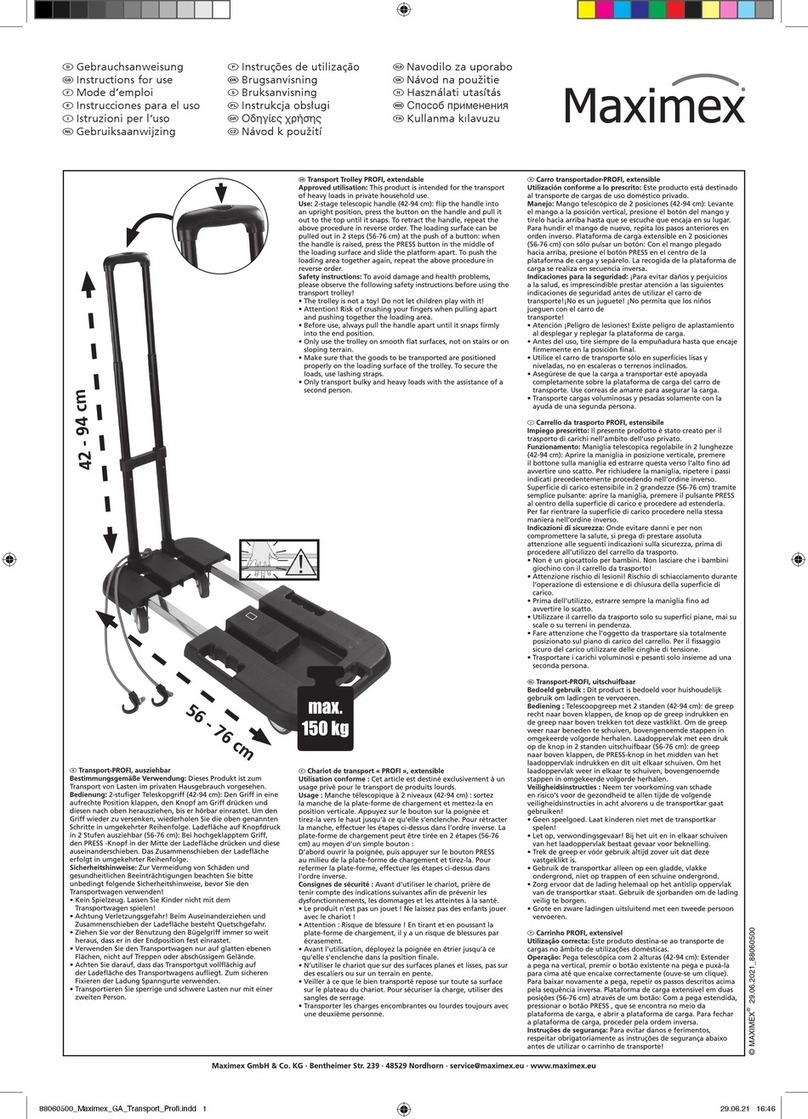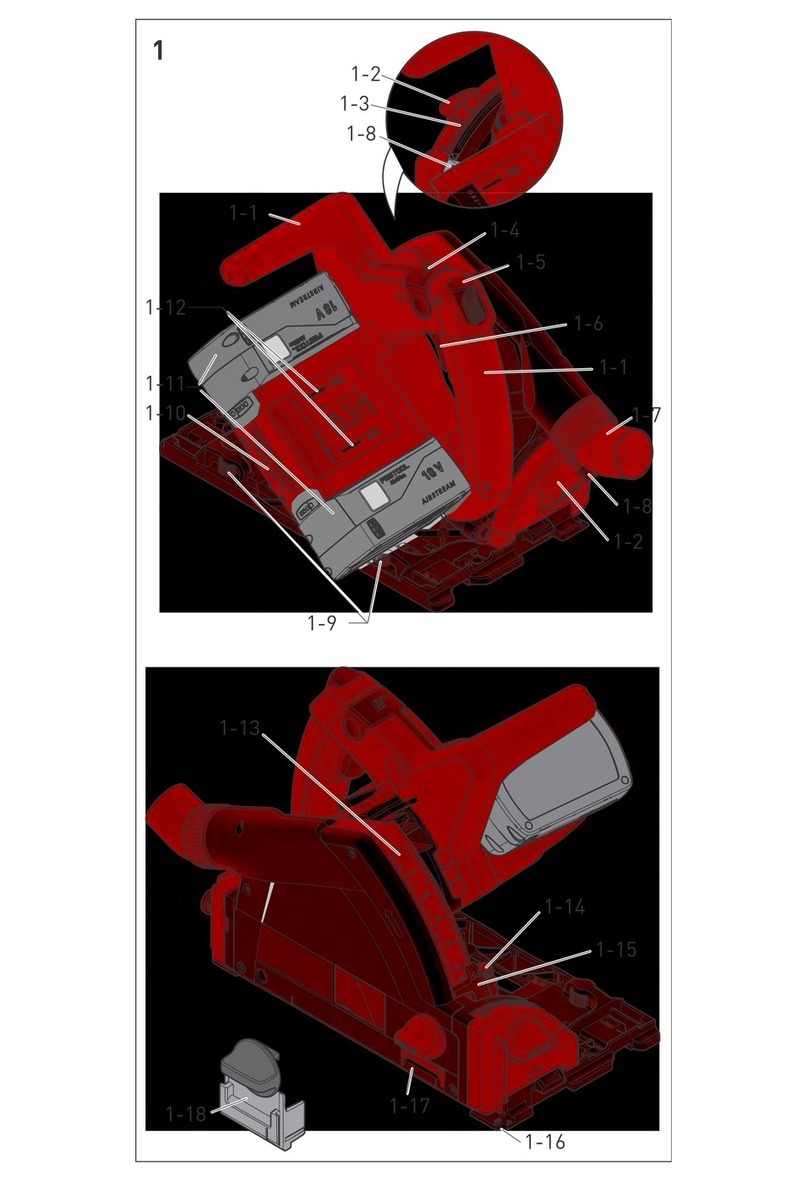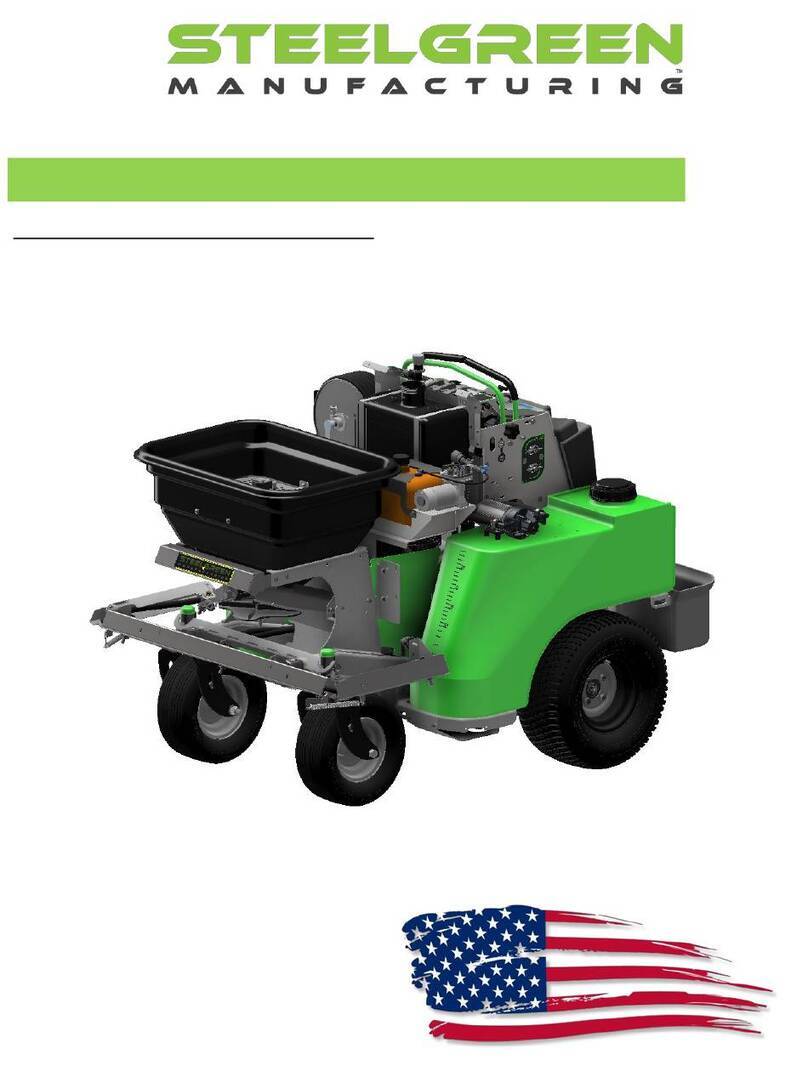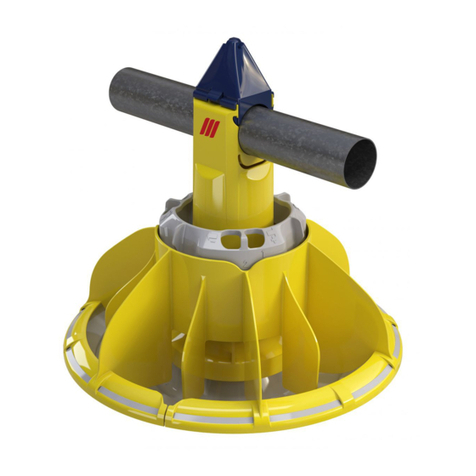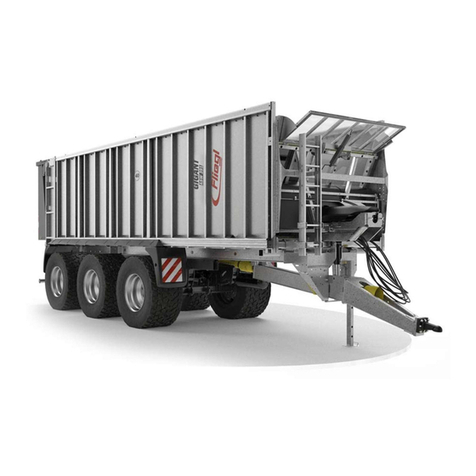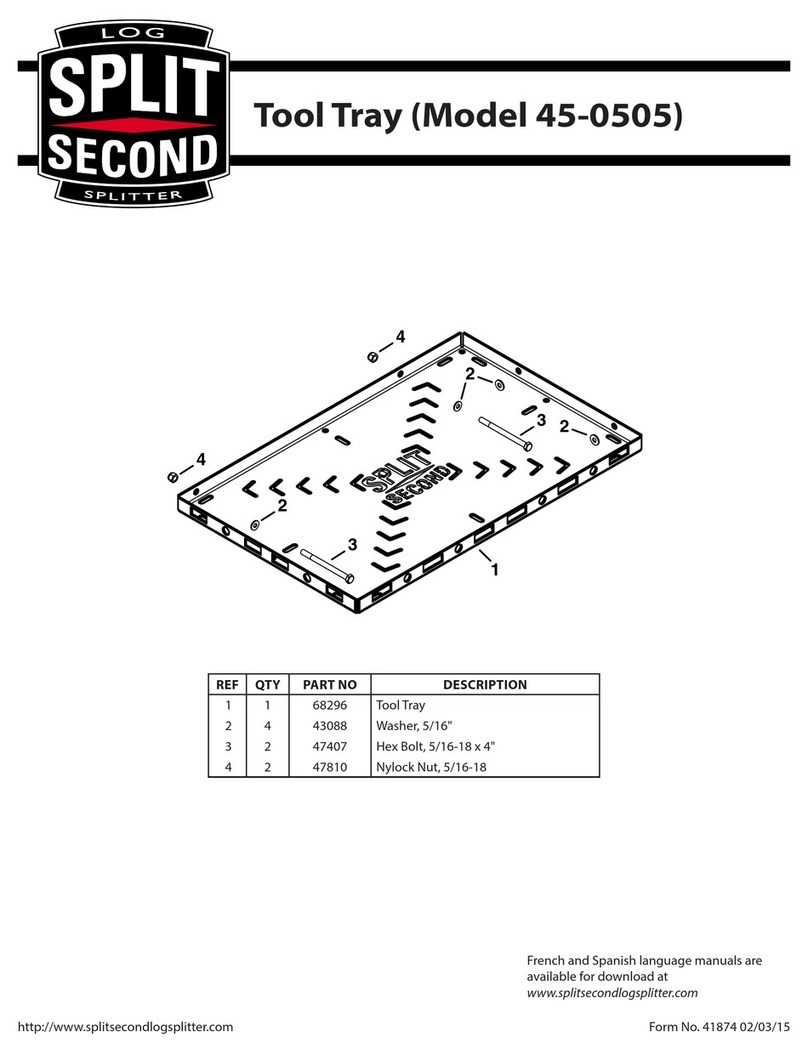Forster VARIO smart 2.00 Powder Installation instructions

Original Operating Manual
Automatic calf feeder
Type VARIO smart 2.00 Powder
TAP5-VS2-50
Program version 2.00 and higher
15. May 2018

2 Table of contents
Table of contents
1. Introduction . . . . . . . . . . . . . . . . . . . . . . . . . . . . . . . . . . . . . . . . . . . . . . . . . . . . . . . . . . . . . . . . . 7
1.1 Automatic feeder. . . . . . . . . . . . . . . . . . . . . . . . . . . . . . . . . . . . . . . . . . . . . . . . . . . . . . . . . 7
1.2 Overview of the automatic feeder . . . . . . . . . . . . . . . . . . . . . . . . . . . . . . . . . . . . . . . . . . . . 8
1.2.1 Front and right side view of automatic feeder. . . . . . . . . . . . . . . . . . . . . . . . . . . . . 8
1.2.2 Left side view of the automatic feeder . . . . . . . . . . . . . . . . . . . . . . . . . . . . . . . . . . 9
1.2.3 Rear view of automatic feeder . . . . . . . . . . . . . . . . . . . . . . . . . . . . . . . . . . . . . . . 10
1.2.4 Boiler with heating circuit . . . . . . . . . . . . . . . . . . . . . . . . . . . . . . . . . . . . . . . . . . . 11
1.3 Technical data . . . . . . . . . . . . . . . . . . . . . . . . . . . . . . . . . . . . . . . . . . . . . . . . . . . . . . . . . . 11
1.3.1 Electrical connection. . . . . . . . . . . . . . . . . . . . . . . . . . . . . . . . . . . . . . . . . . . . . . . 11
1.3.2 Dimensions . . . . . . . . . . . . . . . . . . . . . . . . . . . . . . . . . . . . . . . . . . . . . . . . . . . . . . 12
1.3.3 Weight. . . . . . . . . . . . . . . . . . . . . . . . . . . . . . . . . . . . . . . . . . . . . . . . . . . . . . . . . . 12
1.3.4 Water connection . . . . . . . . . . . . . . . . . . . . . . . . . . . . . . . . . . . . . . . . . . . . . . . . . 12
1.3.5 Boiler. . . . . . . . . . . . . . . . . . . . . . . . . . . . . . . . . . . . . . . . . . . . . . . . . . . . . . . . . . . 12
1.3.6 Milk powder container. . . . . . . . . . . . . . . . . . . . . . . . . . . . . . . . . . . . . . . . . . . . . . 13
1.3.7 Number of feeding stations and animals . . . . . . . . . . . . . . . . . . . . . . . . . . . . . . . 13
1.4 Abbreviations . . . . . . . . . . . . . . . . . . . . . . . . . . . . . . . . . . . . . . . . . . . . . . . . . . . . . . . . . . 13
1.5 Manufacturer's contact details . . . . . . . . . . . . . . . . . . . . . . . . . . . . . . . . . . . . . . . . . . . . . 14
2. Important safety instructions. . . . . . . . . . . . . . . . . . . . . . . . . . . . . . . . . . . . . . . . . . . . . . . . . . 16
2.1 Intended use . . . . . . . . . . . . . . . . . . . . . . . . . . . . . . . . . . . . . . . . . . . . . . . . . . . . . . . . . . . 16
2.2 Your requirements. . . . . . . . . . . . . . . . . . . . . . . . . . . . . . . . . . . . . . . . . . . . . . . . . . . . . . . 16
2.3 Residual risks . . . . . . . . . . . . . . . . . . . . . . . . . . . . . . . . . . . . . . . . . . . . . . . . . . . . . . . . . . 16
2.4 Your duties . . . . . . . . . . . . . . . . . . . . . . . . . . . . . . . . . . . . . . . . . . . . . . . . . . . . . . . . . . . . 18
2.5 How am I warned of hazards? . . . . . . . . . . . . . . . . . . . . . . . . . . . . . . . . . . . . . . . . . . . . . 18
2.5.1 What are the components of a hazard description? . . . . . . . . . . . . . . . . . . . . . . . 19
2.5.2 Potentially fatal hazards or health hazards. . . . . . . . . . . . . . . . . . . . . . . . . . . . . . 19
2.5.3 Material damage . . . . . . . . . . . . . . . . . . . . . . . . . . . . . . . . . . . . . . . . . . . . . . . . . . 19
2.5.4 Safety signs . . . . . . . . . . . . . . . . . . . . . . . . . . . . . . . . . . . . . . . . . . . . . . . . . . . . . 20
2.6 Safety devices. . . . . . . . . . . . . . . . . . . . . . . . . . . . . . . . . . . . . . . . . . . . . . . . . . . . . . . . . . 22
3. Hygiene . . . . . . . . . . . . . . . . . . . . . . . . . . . . . . . . . . . . . . . . . . . . . . . . . . . . . . . . . . . . . . . . . . . 24
4. Operation . . . . . . . . . . . . . . . . . . . . . . . . . . . . . . . . . . . . . . . . . . . . . . . . . . . . . . . . . . . . . . . .. .25
4.1 The Auto LED . . . . . . . . . . . . . . . . . . . . . . . . . . . . . . . . . . . . . . . . . . . . . . . . . . . . . . . . . . 25
4.2 Offline mode . . . . . . . . . . . . . . . . . . . . . . . . . . . . . . . . . . . . . . . . . . . . . . . . . . . . . . . . . . . 25
4.3 Automatic mode . . . . . . . . . . . . . . . . . . . . . . . . . . . . . . . . . . . . . . . . . . . . . . . . . . . . . . . . 25
4.4 Hand terminal . . . . . . . . . . . . . . . . . . . . . . . . . . . . . . . . . . . . . . . . . . . . . . . . . . . . . . . . . . 26
4.4.1 The keypad . . . . . . . . . . . . . . . . . . . . . . . . . . . . . . . . . . . . . . . . . . . . . . . . . . . . . . 27
4.4.2 Data backup . . . . . . . . . . . . . . . . . . . . . . . . . . . . . . . . . . . . . . . . . . . . . . . . . . . . . 28
4.5 Menu structure . . . . . . . . . . . . . . . . . . . . . . . . . . . . . . . . . . . . . . . . . . . . . . . . . . . . . . . . . 29
4.5.1 Symbols . . . . . . . . . . . . . . . . . . . . . . . . . . . . . . . . . . . . . . . . . . . . . . . . . . . . . . . . 29
4.6 Menus . . . . . . . . . . . . . . . . . . . . . . . . . . . . . . . . . . . . . . . . . . . . . . . . . . . . . . . . . . . . . . . . 31
4.6.1 Animal control . . . . . . . . . . . . . . . . . . . . . . . . . . . . . . . . . . . . . . . . . . . . . . . . . . . . 31
4.6.2 Main menu . . . . . . . . . . . . . . . . . . . . . . . . . . . . . . . . . . . . . . . . . . . . . . . . . . . . . . 32

Table of contents 3
4.6.3 Manual functions. . . . . . . . . . . . . . . . . . . . . . . . . . . . . . . . . . . . . . . . . . . . . . . . . . 32
5. Operation . . . . . . . . . . . . . . . . . . . . . . . . . . . . . . . . . . . . . . . . . . . . . . . . . . . . . . . . . . . . . . . .. .34
5.1 Feeder operating modes. . . . . . . . . . . . . . . . . . . . . . . . . . . . . . . . . . . . . . . . . . . . . . . . . . 34
5.1.1 Rationed mode . . . . . . . . . . . . . . . . . . . . . . . . . . . . . . . . . . . . . . . . . . . . . . . . . . . 34
5.1.2 Ad lib mode (emergency mode) . . . . . . . . . . . . . . . . . . . . . . . . . . . . . . . . . . . . . . 34
5.2 Cloud. . . . . . . . . . . . . . . . . . . . . . . . . . . . . . . . . . . . . . . . . . . . . . . . . . . . . . . . . . . . . . . . . 35
5.3 Routine tasks . . . . . . . . . . . . . . . . . . . . . . . . . . . . . . . . . . . . . . . . . . . . . . . . . . . . . . . . . . 36
6. Cleaning. . . . . . . . . . . . . . . . . . . . . . . . . . . . . . . . . . . . . . . . . . . . . . . . . . . . . . . . . . . . . . . . . . . 37
6.1 Cleaning with cleaning agents . . . . . . . . . . . . . . . . . . . . . . . . . . . . . . . . . . . . . . . . . . . . . 37
6.1.1 Preparing for cleaning. . . . . . . . . . . . . . . . . . . . . . . . . . . . . . . . . . . . . . . . . . . . . . 38
6.1.2 Cleaning with a cleaning agent. . . . . . . . . . . . . . . . . . . . . . . . . . . . . . . . . . . . . . . 39
6.1.3 Cleaning with two cleaning agents . . . . . . . . . . . . . . . . . . . . . . . . . . . . . . . . . . . . 44
6.1.4 Clean the cleaning agent pump and the cleaning agent lance. . . . . . . . . . . . . . . 47
6.2 Cleaning without cleaning agents . . . . . . . . . . . . . . . . . . . . . . . . . . . . . . . . . . . . . . . . . . . 49
6.2.1 Preparing for cleaning. . . . . . . . . . . . . . . . . . . . . . . . . . . . . . . . . . . . . . . . . . . . . . 49
6.2.2 Manual cleaning of the suction hose . . . . . . . . . . . . . . . . . . . . . . . . . . . . . . . . . . 49
6.2.3 Rinsing the hose . . . . . . . . . . . . . . . . . . . . . . . . . . . . . . . . . . . . . . . . . . . . . . . . . . 50
6.2.4 Drain the hoses. . . . . . . . . . . . . . . . . . . . . . . . . . . . . . . . . . . . . . . . . . . . . . . . . . . 51
6.2.5 Cleaning the powder discharge opening . . . . . . . . . . . . . . . . . . . . . . . . . . . . . . . 51
6.2.6 Thorough cleaning of the powder container with the dosing unit . . . . . . . . . . . . . 52
7. Transmitter and animal management . . . . . . . . . . . . . . . . . . . . . . . . . . . . . . . . . . . . . . . . . . . 54
7.1 Managing the transmitters . . . . . . . . . . . . . . . . . . . . . . . . . . . . . . . . . . . . . . . . . . . . . . . . 54
7.1.1 Basics . . . . . . . . . . . . . . . . . . . . . . . . . . . . . . . . . . . . . . . . . . . . . . . . . . . . . . . . . . 54
7.1.2 Creating transmitter numbers . . . . . . . . . . . . . . . . . . . . . . . . . . . . . . . . . . . . . . . . 54
7.1.3 Reading transmitter numbers . . . . . . . . . . . . . . . . . . . . . . . . . . . . . . . . . . . . . . . . 55
7.1.4 Manually entering transmitter numbers . . . . . . . . . . . . . . . . . . . . . . . . . . . . . . . . 55
7.1.5 Assigning animal numbers . . . . . . . . . . . . . . . . . . . . . . . . . . . . . . . . . . . . . . . . . . 55
7.1.6 Editing transmitters or animal numbers . . . . . . . . . . . . . . . . . . . . . . . . . . . . . . . . 56
7.1.7 Deleting the transmitter number when canceling an animal . . . . . . . . . . . . . . . . . 57
7.1.8 Calling up the transmitter statistics . . . . . . . . . . . . . . . . . . . . . . . . . . . . . . . . . . . . 58
7.2 Registering animals . . . . . . . . . . . . . . . . . . . . . . . . . . . . . . . . . . . . . . . . . . . . . . . . . . . . . 58
7.2.1 Manual registration of animals . . . . . . . . . . . . . . . . . . . . . . . . . . . . . . . . . . . . . . . 58
7.2.2 Automatically registering animals . . . . . . . . . . . . . . . . . . . . . . . . . . . . . . . . . . . . . 59
7.3 Canceling animals or animal groups. . . . . . . . . . . . . . . . . . . . . . . . . . . . . . . . . . . . . . . . . 60
7.3.1 Canceling individual animals . . . . . . . . . . . . . . . . . . . . . . . . . . . . . . . . . . . . . . . . 60
7.3.2 Canceling a group. . . . . . . . . . . . . . . . . . . . . . . . . . . . . . . . . . . . . . . . . . . . . . . . . 61
7.3.3 Canceling weaned animals. . . . . . . . . . . . . . . . . . . . . . . . . . . . . . . . . . . . . . . . . . 61
7.4 Changing the registration of animals . . . . . . . . . . . . . . . . . . . . . . . . . . . . . . . . . . . . . . . . 61
8. Feeding . . . . . . . . . . . . . . . . . . . . . . . . . . . . . . . . . . . . . . . . . . . . . . . . . . . . . . . . . . . . . . . . . . . 62
8.1 Replenishing feed . . . . . . . . . . . . . . . . . . . . . . . . . . . . . . . . . . . . . . . . . . . . . . . . . . . . . . . 62
8.1.1 Filling the milk powder container . . . . . . . . . . . . . . . . . . . . . . . . . . . . . . . . . . . . . 62
8.2 Feed preparation. . . . . . . . . . . . . . . . . . . . . . . . . . . . . . . . . . . . . . . . . . . . . . . . . . . . . .. .62

4 Table of contents
8.2.1 Feed distribution . . . . . . . . . . . . . . . . . . . . . . . . . . . . . . . . . . . . . . . . . . . . . . . . . . 62
8.3 Feeding . . . . . . . . . . . . . . . . . . . . . . . . . . . . . . . . . . . . . . . . . . . . . . . . . . . . . . . . . . . . . . . 63
8.3.1 40FIT feeding . . . . . . . . . . . . . . . . . . . . . . . . . . . . . . . . . . . . . . . . . . . . . . . . . . . . 63
8.3.2 Interval feeding program. . . . . . . . . . . . . . . . . . . . . . . . . . . . . . . . . . . . . . . . . . . . 63
8.3.3 Preferred feeding . . . . . . . . . . . . . . . . . . . . . . . . . . . . . . . . . . . . . . . . . . . . . . . . . 64
8.3.4 Extra portion . . . . . . . . . . . . . . . . . . . . . . . . . . . . . . . . . . . . . . . . . . . . . . . . . . . . . 64
8.4 Checking and changing feeding data for individual animals . . . . . . . . . . . . . . . . . . . . . . . 65
8.4.1 Group membership . . . . . . . . . . . . . . . . . . . . . . . . . . . . . . . . . . . . . . . . . . . . . . . . 65
8.4.2 Feed quantity . . . . . . . . . . . . . . . . . . . . . . . . . . . . . . . . . . . . . . . . . . . . . . . . . . . . 65
8.4.3 Feed concentration . . . . . . . . . . . . . . . . . . . . . . . . . . . . . . . . . . . . . . . . . . . . . . . . 66
8.4.4 Weight. . . . . . . . . . . . . . . . . . . . . . . . . . . . . . . . . . . . . . . . . . . . . . . . . . . . . . . . . . 66
8.4.5 Shortening or lengthening total feeding duration . . . . . . . . . . . . . . . . . . . . . . . . . 66
8.5 Feeding plans . . . . . . . . . . . . . . . . . . . . . . . . . . . . . . . . . . . . . . . . . . . . . . . . . . . . . . . . . . 67
8.5.1 Changing the default quantity plan . . . . . . . . . . . . . . . . . . . . . . . . . . . . . . . . . . . . 68
8.5.2 Changing the default concentration plan . . . . . . . . . . . . . . . . . . . . . . . . . . . . . . . 69
8.5.3 Changing the default quantity limitation plan . . . . . . . . . . . . . . . . . . . . . . . . . . . . 71
8.6 Winter feeding plan . . . . . . . . . . . . . . . . . . . . . . . . . . . . . . . . . . . . . . . . . . . . . . . . . . . . . . 72
8.7 Alarm level . . . . . . . . . . . . . . . . . . . . . . . . . . . . . . . . . . . . . . . . . . . . . . . . . . . . . . . . . . . . 73
9. Animal control. . . . . . . . . . . . . . . . . . . . . . . . . . . . . . . . . . . . . . . . . . . . . . . . . . . . . . . . . . . . . . 75
9.1 Animal list . . . . . . . . . . . . . . . . . . . . . . . . . . . . . . . . . . . . . . . . . . . . . . . . . . . . . . . . . . . . . 75
9.2 Entitlement . . . . . . . . . . . . . . . . . . . . . . . . . . . . . . . . . . . . . . . . . . . . . . . . . . . . . . . . . . . . 77
9.3 Alarm. . . . . . . . . . . . . . . . . . . . . . . . . . . . . . . . . . . . . . . . . . . . . . . . . . . . . . . . . . . . . . . . . 78
9.4 Plan over date. . . . . . . . . . . . . . . . . . . . . . . . . . . . . . . . . . . . . . . . . . . . . . . . . . . . . . . . . . 79
9.5 40FIT. . . . . . . . . . . . . . . . . . . . . . . . . . . . . . . . . . . . . . . . . . . . . . . . . . . . . . . . . . . . . . . . . 80
9.6 Marked . . . . . . . . . . . . . . . . . . . . . . . . . . . . . . . . . . . . . . . . . . . . . . . . . . . . . . . . . . . . . . . 81
9.7 New. . . . . . . . . . . . . . . . . . . . . . . . . . . . . . . . . . . . . . . . . . . . . . . . . . . . . . . . . . . . . . . . . . 83
9.8 Double. . . . . . . . . . . . . . . . . . . . . . . . . . . . . . . . . . . . . . . . . . . . . . . . . . . . . . . . . . . . . . . . 84
9.9 Unknown . . . . . . . . . . . . . . . . . . . . . . . . . . . . . . . . . . . . . . . . . . . . . . . . . . . . . . . . . . . . . . 85
9.10 All . . . . . . . . . . . . . . . . . . . . . . . . . . . . . . . . . . . . . . . . . . . . . . . . . . . . . . . . . . . . . . . . . . . 85
9.11 Total consumption . . . . . . . . . . . . . . . . . . . . . . . . . . . . . . . . . . . . . . . . . . . . . . . . . . . . .. .85
9.11.1 Consumption of all calves. . . . . . . . . . . . . . . . . . . . . . . . . . . . . . . . . . . . . . . . . . . 86
9.11.2 Consumption of individual calves . . . . . . . . . . . . . . . . . . . . . . . . . . . . . . . . . . . . . 86
9.11.3 Prepared feed portions . . . . . . . . . . . . . . . . . . . . . . . . . . . . . . . . . . . . . . . . . . . . . 86
9.11.4 Consumption of a group . . . . . . . . . . . . . . . . . . . . . . . . . . . . . . . . . . . . . . . . . . . . 86
9.12 Print. . . . . . . . . . . . . . . . . . . . . . . . . . . . . . . . . . . . . . . . . . . . . . . . . . . . . . . . . . . . . . . . . . 87
9.13 Searching for animals . . . . . . . . . . . . . . . . . . . . . . . . . . . . . . . . . . . . . . . . . . . . . . . . . . . . 87
10. Calibration . . . . . . . . . . . . . . . . . . . . . . . . . . . . . . . . . . . . . . . . . . . . . . . . . . . . . . . . . . . . . . . . . 88
10.1 Calibrating without calibration scales . . . . . . . . . . . . . . . . . . . . . . . . . . . . . . . . . . . . . . . . 88
10.2 Calibrating with calibration scales. . . . . . . . . . . . . . . . . . . . . . . . . . . . . . . . . . . . . . . . . . . 89
11. Care and maintenance . . . . . . . . . . . . . . . . . . . . . . . . . . . . . . . . . . . . . . . . . . . . . . . . . . . . . . . 92
11.1 Safety instructions. . . . . . . . . . . . . . . . . . . . . . . . . . . . . . . . . . . . . . . . . . . . . . . . . . . . . . . 92
11.2 Daily care and maintenance tasks . . . . . . . . . . . . . . . . . . . . . . . . . . . . . . . . . . . . . . . . . . 93
11.3 Care and maintenance tasks required every 4 months . . . . . . . . . . . . . . . . . . . . . . . . . . 94

Table of contents 5
11.3.1 Calibrating feed components . . . . . . . . . . . . . . . . . . . . . . . . . . . . . . . . . . . . . . . . 94
11.3.2 Replacing hoses and teats . . . . . . . . . . . . . . . . . . . . . . . . . . . . . . . . . . . . . . . . . . 95
11.4 Annual care and maintenance tasks. . . . . . . . . . . . . . . . . . . . . . . . . . . . . . . . . . . . . . . . . 95
12. Faults and warnings . . . . . . . . . . . . . . . . . . . . . . . . . . . . . . . . . . . . . . . . . . . . . . . . . . . . . . . . . 96
12.1 Faults . . . . . . . . . . . . . . . . . . . . . . . . . . . . . . . . . . . . . . . . . . . . . . . . . . . . . . . . . . . . . . . . 96
12.1.1 Heating up . . . . . . . . . . . . . . . . . . . . . . . . . . . . . . . . . . . . . . . . . . . . . . . . . . . . . . 96
12.1.2 Temperature too high . . . . . . . . . . . . . . . . . . . . . . . . . . . . . . . . . . . . . . . . . . . . . . 97
12.1.3 Boiler not filled . . . . . . . . . . . . . . . . . . . . . . . . . . . . . . . . . . . . . . . . . . . . . . . . . . . 98
12.1.4 Shortage of water . . . . . . . . . . . . . . . . . . . . . . . . . . . . . . . . . . . . . . . . . . . . . . . . . 98
12.1.5 Water meter . . . . . . . . . . . . . . . . . . . . . . . . . . . . . . . . . . . . . . . . . . . . . . . . . . . . . 99
12.1.6 Emptying the mixer . . . . . . . . . . . . . . . . . . . . . . . . . . . . . . . . . . . . . . . . . . . . . . . 100
12.1.7 Heating system . . . . . . . . . . . . . . . . . . . . . . . . . . . . . . . . . . . . . . . . . . . . . . . . . . 101
12.1.8 Boiler temperature sensor . . . . . . . . . . . . . . . . . . . . . . . . . . . . . . . . . . . . . . . . . 101
12.1.9 Calibration. . . . . . . . . . . . . . . . . . . . . . . . . . . . . . . . . . . . . . . . . . . . . . . . . . . . . . 101
12.1.10 Milk empty . . . . . . . . . . . . . . . . . . . . . . . . . . . . . . . . . . . . . . . . . . . . . . . . . . . . . 102
12.1.11 Supply electrode . . . . . . . . . . . . . . . . . . . . . . . . . . . . . . . . . . . . . . . . . . . . . . . . 102
12.1.12 ID chip . . . . . . . . . . . . . . . . . . . . . . . . . . . . . . . . . . . . . . . . . . . . . . . . . . . . . . . . 103
12.1.13 Station/drain valve . . . . . . . . . . . . . . . . . . . . . . . . . . . . . . . . . . . . . . . . . . . . . . . 103
12.1.14 Uncontrolled output . . . . . . . . . . . . . . . . . . . . . . . . . . . . . . . . . . . . . . . . . . . . . . 103
12.2 Warnings. . . . . . . . . . . . . . . . . . . . . . . . . . . . . . . . . . . . . . . . . . . . . . . . . . . . . . . . . . . . . 104
12.2.1 Emptying the mixer . . . . . . . . . . . . . . . . . . . . . . . . . . . . . . . . . . . . . . . . . . . . . . . 104
12.2.2 Fill up the MP container . . . . . . . . . . . . . . . . . . . . . . . . . . . . . . . . . . . . . . . . . . . 105
12.2.3 Mixer temperature sensor. . . . . . . . . . . . . . . . . . . . . . . . . . . . . . . . . . . . . . . . . . 105
12.2.4 Identification . . . . . . . . . . . . . . . . . . . . . . . . . . . . . . . . . . . . . . . . . . . . . . . . . . . . 105
12.2.5 Unknown transmitter. . . . . . . . . . . . . . . . . . . . . . . . . . . . . . . . . . . . . . . . . . . . . . 105
12.2.6 Calibration. . . . . . . . . . . . . . . . . . . . . . . . . . . . . . . . . . . . . . . . . . . . . . . . . . . . . . 106
12.2.7 Calibration scales . . . . . . . . . . . . . . . . . . . . . . . . . . . . . . . . . . . . . . . . . . . . . . . . 106
12.2.8 ID chip. . . . . . . . . . . . . . . . . . . . . . . . . . . . . . . . . . . . . . . . . . . . . . . . . . . . . . . . . 106
12.2.9 Duplicate animal number . . . . . . . . . . . . . . . . . . . . . . . . . . . . . . . . . . . . . . . . . . 106
12.2.10 Machine capacity . . . . . . . . . . . . . . . . . . . . . . . . . . . . . . . . . . . . . . . . . . . . . . . . 107
12.2.11 Check SD card . . . . . . . . . . . . . . . . . . . . . . . . . . . . . . . . . . . . . . . . . . . . . . . . . . 108
12.3 Other faults and messages . . . . . . . . . . . . . . . . . . . . . . . . . . . . . . . . . . . . . . . . . . . . . . . 108
12.3.1 Automatic feeder. . . . . . . . . . . . . . . . . . . . . . . . . . . . . . . . . . . . . . . . . . . . . . . . . 108
12.3.2 Hand terminal . . . . . . . . . . . . . . . . . . . . . . . . . . . . . . . . . . . . . . . . . . . . . . . . . . . 108
12.3.3 Boot loader . . . . . . . . . . . . . . . . . . . . . . . . . . . . . . . . . . . . . . . . . . . . . . . . . . . . . 109
12.4 Service messages. . . . . . . . . . . . . . . . . . . . . . . . . . . . . . . . . . . . . . . . . . . . . . . . . . . . . . 109
13. Disposal . . . . . . . . . . . . . . . . . . . . . . . . . . . . . . . . . . . . . . . . . . . . . . . . . . . . . . . . . . . . . . . . . . 111
13.1 Disposing of cleaning agent residues. . . . . . . . . . . . . . . . . . . . . . . . . . . . . . . . . . . . . . . 111
13.2 Disposing of hoses . . . . . . . . . . . . . . . . . . . . . . . . . . . . . . . . . . . . . . . . . . . . . . . . . . . .. 111
13.3 Disposing of cables. . . . . . . . . . . . . . . . . . . . . . . . . . . . . . . . . . . . . . . . . . . . . . . . . . . .. 111
13.4 Disposal of the hand terminal . . . . . . . . . . . . . . . . . . . . . . . . . . . . . . . . . . . . . . . . . . . . . 111
13.5 Disposal of the processor circuit board. . . . . . . . . . . . . . . . . . . . . . . . . . . . . . . . . . . . . . 111
13.6 Disposal of the automatic feeder . . . . . . . . . . . . . . . . . . . . . . . . . . . . . . . . . . . . . . . . . . 112

6 Table of contents
14. Appendix . . . . . . . . . . . . . . . . . . . . . . . . . . . . . . . . . . . . . . . . . . . . . . . . . . . . . . . . . . . . . . . . . 113
14.1 Standard feeding plans . . . . . . . . . . . . . . . . . . . . . . . . . . . . . . . . . . . . . . . . . . . . . . . . . . 113
14.2 Basic principle of interval feeding . . . . . . . . . . . . . . . . . . . . . . . . . . . . . . . . . . . . . . . . . . 115
14.3 Milk powder (MP) conversion table. . . . . . . . . . . . . . . . . . . . . . . . . . . . . . . . . . . . . . . . . 115
14.4 Materials list . . . . . . . . . . . . . . . . . . . . . . . . . . . . . . . . . . . . . . . . . . . . . . . . . . . . . . . . . . 116
14.5 Care and Maintenance schedule / routine work . . . . . . . . . . . . . . . . . . . . . . . . . . . . . . . 116
14.5.1 Important safety instructions. . . . . . . . . . . . . . . . . . . . . . . . . . . . . . . . . . . . . . . . 116
14.5.2 Maintenance intervals and activities . . . . . . . . . . . . . . . . . . . . . . . . . . . . . . . . . . 117
Index. . . . . . . . . . . . . . . . . . . . . . . . . . . . . . . . . . . . . . . . . . . . . . . . . . . . . . . . . . . . . . . . . . . . . 120

Introduction 7
1. Introduction
This chapter explains how your automatic feeder is designed and how to run it safely as intend-
ed.
• Read the operating manual carefully before commissioning the automatic feeder and ask
your service technician to explain anything that is unclear to you before commissioning.
• Do not operate the automatic feeder until you have read and understood the safety chapter
(see 2. "Important safety instructions" - 16). Resolve any questions with your service tech-
nician before commissioning the feeder.
• The operating manual for the automatic feeder, the operating manuals of all additional
equipment to be connected and the safety data sheets for cleaning agents must be kept
readily available at all times and passed on to the next user.
• Observe all of the warnings and safety instructions in this operating manual.
• If your automatic feeder has additional equipment, you must also observe the separate op-
erating manuals and the safety warnings and safety instructions for the additional equip-
ment.
1.1 Automatic feeder
Modern calf rearing businesses primarily use feeding systems with individual animal identifica-
tion functions. Calves are identified via their collar transponders or electronic earmarks and fed
based on their individual requirements.
Feed is always prepared fresh and dispensed to calves in small portions at the temperature and
concentration that you have specified.
The hand terminal provides quick and easy access to the controls of the automatic feeder when
you are right near your animals. You can connect the automatic feeder to your PC and then con-
trol the feeder from your computer.
Your advantages:
1. Added functions eliminate cumbersome routine tasks and save you time.
2. Automatic cleaning programs improve feed hygiene.
3. The hand terminal gives you quick access to important animal data.
4. The animal control list provides a clear and easy way of monitoring animals.
5. The automatic feeder offers you a wide range of options for feeding plans and recipes.
6. You can expand the functionality of the automatic feeder by incorporating concentrate feed-
ers, animal scales and PC programs with graphical analyses.
7. The automatic feeder's rugged and reliable design makes it easier to use in pens.
8. The automatic feeder can be integrated into the feeding systems of well-known dairy equip-
ment manufacturers.

8 Introduction
1.2 Overview of the automatic feeder
1.2.1 Front and right side view of automatic feeder
1 Milk powder container
2 Outlet valve (not shown here)
3 Milk powder discharge
4 Water supply
5 Mixer beaker
6 Rod electrode
7 Hose connection from mixer to the feeding pump
8 Mixer motor
9 Wing nut for transport restraint
10 Water connection
11 Temperature sensor
12 Point electrode for 500 ml portion
13 Right door
14 Ground connection screw
15 Main switch
16 Hand terminal
1
2
3
4
5
6
7
8
10
11
12
13
14
15
16
9

Introduction 9
1.2.2 Left side view of the automatic feeder
The Name plate is located above the left side door on the outside of the automatic feeder. It
contains information about the manufacturer, type and number of the automatic feeder, informa-
tion about connecting the feeder to the power supply as well as its certification. An example of
a name plate is shown below.
1 Name and address of the manufacturer
2 Type and number of the automatic feeder
3 Information on the connection to the power supply
4 Certification of the automatic feeder
1
2
3
4

10 Introduction
Rear left side door
1 Cleaning agent dosing pump 2 (acid)
2 Mixer drain valve
3 Feeding box valves (optional)
4 Drain hose (not shown here)
5 Drain hose to gully 2
6 Hose connection from mixer to the feeding pump
7 Cleaning agent dosing pump 1 (alkaline)
8 Dosing device for liquid additives (optional)
1.2.3 Rear view of automatic feeder
1 Outlet valve for hose cleaning
1
2
3
4
5
6
7
8

Introduction 11
1.2.4 Boiler with heating circuit
1 Hose connection for water pipe
2 Pressure-reducing valve
3 Water meter
4 Boiler water valve
5 Boiler
6 Mixer
7 Valve unit (optional)
8 Hose connection between valve unit and teat
9 Mixer drain valve
10 Feeding pump
1.3 Technical data
1.3.1 Electrical connection
Note: The specifications for the electrical connection to your automatic feeder are on its name
plate above the left side door on the outside (see 1.2.2 "Left side view of the automatic feeder"
-9).

12 Introduction
1.3.2 Dimensions
Depth when the fly screen door is opened ~ 690mm
1.3.3 Weight
Approx. 80kg.
1.3.4 Water connection
Water is connected via a 3/4 inch hose and with a 3/4 inch screwed connection.
NOTICE!
The water must be of drinking water quality.
►Please bear in mind that high calcium, iron and manganese concentrations can cause pre-
mature wear of the components. In such cases it makes sense to install appropriate filtration
systems.
The water pressure on site must be between 1 and 6 bar or between 100000 and 600000 Pas-
cal.
1.3.5 Boiler
The boiler holds approximately 7 ltr of water.

Introduction 13
1.3.6 Milk powder container
The milk power container with attachment holds approximately 35 kg of milk substitute.
1.3.7 Number of feeding stations and animals
1.4 Abbreviations
Feeding stations: max. 4
Calves per feeding station max. 30
Calves per device max. 120
Abbreviation Meaning
Call ltr. t. or Call t. Call-off today in liters
Call ltr. y. or Call y. Call-off yesterday in liters
abs. absolute
Adli Ad lib
save amt. Amount saved up
feed.pump Feeding pump
out. pause Dispensing pause
sw.off del. Switch-off delay
dr. time Drink-out time
bo Boiler
dos. Dosage
El Electrode
electrol. Electrolyte
sw. on del. Switch-on delay
F 40 FIT feeding
f 40 FIT periods
gradient Gradient control
gr. A (B) Group A (B)
IFS TR Intelligent feeding station feed
IFS-4 Intelligent feeding station feed, quadruple unit
IFS KF Intelligent feeding station concentrate
IV Interval feeding program
C Concentrate
Conc. concentr. Concentration
dra.v. N. Drain via teat
w. entitle. With entitlement
w/add. or w/addiv. With additive
MAP Manual feeding pump

14 Introduction
1.5 Manufacturer's contact details
Please contact us if you have any questions about our products or require technical support.
When you contact us, always specify the model, serial number and program version of your au-
tomatic feeder so that we can tailor our service to your unit.
The device number and model are located on the name plate on the left of the automatic feeder
housing. When commissioning your automatic feeder, ask your service technician for the device
number and model.
You can call up the program version via your hand-held terminal. The relevant menu item can
be found under > Diagnostics > Version > Device. When commissioning your automatic
feeder, ask your service technician for the version of your program.
You can note the device type, serial number and program version in the fields provided.
MP Milk substitute
max maximum
Min. temp. Minimum temperature
mix. full Mixer full
mixer cl. Cleaning the mixer
mixer dr.valve Mixer drain valve
n. not
No. Number
Clean teat Clean teat
w/o entitlement Without entitlement
w/o add. or w/o add. Without additive
P 1-5 Periods 1-5
R rationed feeding principle
rel. relative
Drnk spd. Drinking speed
ho. Hose
clo.? close
servo Servo control
det. pump Flushing agent pump
Temp. Temperature
TR Feeding box
fd.sensor Feeding sensor
Bo. water Boiler water
Incr./Red. Increase/reduction
add. disp. Additive dispenser

Introduction 15
Device type:
Serial number:
Program version:
Our contact details:
Förster-Technik GmbH
Gerwigstrasse 25
78234 Engen, Germany
Phone: +49/ (0)7733/ 9406- 0
Fax: +49/ (0)7733/ 9406- 99
www.foerster-technik.de

16 Important safety instructions
2. Important safety instructions
This chapter outlines:
• The hazards caused by your automatic feeder and how to avoid them.
• The safety labels attached to the automatic feeder and what they mean.
• How to operate the automatic feeder safely.
The automatic feeder is state of the art and is produced in compliance with recognized safety
regulations. However, hazards and adverse effects may arise when using it. Both warning signs
directly on the automatic feeder and warning notices in this manual provide warning of these
hazards.
2.1 Intended use
The automatic feeder may only be used to prepare, heat, and dispense liquid feeds, for example
milk, for calves.
2.2 Your requirements
You must have experience in calf rearing, many years of professional experience in agriculture
and an excellent command of technical agricultural practice.
You must be familiar with accident prevention regulations and the generally recognized safety
regulations.
2.3 Residual risks
Hazards to health caused by the automatic feeder:
WARNING!
Danger from electric current
The automatic feeder is powered by electricity.
►You must observe the general precautions for handling electrical equipment.
• Read the operating manual before operating the automatic feeder.
• Keep children away from the automatic feeder.
• Do not touch any moving parts of the automatic feeder, for example the mixer blades.
• Only use genuine spare parts from the manufacturer.
• Switch off the automatic feeder and disconnect the power plug before carrying out any main-
tenance or cleaning work on the automatic feeder.
• If you are operating the automatic feeder outside of closed spaces, you must protect it
against rain and moisture, for example with a roof.
• Do not operate the automatic feeder outdoors, in the open.
• If there is a connection to a drinking water system, then the system must be protected from
back siphoning.

Important safety instructions 17
• The following specific hazards are associated with the automatic feeder's electrical system:
•Electrical discharge. If there is an electrical or voltage discharge, electric current flows
through parts of the automatic feeder that are normally insulated. Touching the unit can
cause a fatal electric shock. The automatic feeder must be checked regularly for electri-
cal safety in compliance with national regulations (repeated inspection). Make sure that
a 30 mA residual current device (RCD) is installed.
•Short circuit, indirect contact. If there is a short circuit, current at many times the level
of the operating current can flow. Touching the unit can cause a fatal electric shock.
Make sure you install a fuse (provided by the customer) corresponding to the rating on
the name plate and a 30 mA residual current device (RCD) in compliance with local reg-
ulations.
• The solenoid valves and the pipes to the valves can reach temperatures of up to 70°C.
Touching it can cause burns. Do not touch the solenoid valves and pipes during operation.
• Liquid at temperatures of up to 70°C can spray out of the pipes to the valves. This can cause
scalding. Do not touch the pipes during operation, and allow them to cool down before per-
forming any maintenance or cleaning work. Carry out the recommended maintenance on
the hoses.
• The mixer and powder supply may start up unexpectedly if a calf which is entitled to feed
approaches the unit. This can crush or chop off fingers or hands. Never reach into the area
of the mixer or powder supply while the automatic feeder is in operation. Use only the scrap-
er supplied to clean the powder discharge opening.
•Poisoning. Additives that are fed to the calves may contain substances that are hazardous
to human health. Avoid direct contact and always wear protective gloves and goggles when
handling these substances.
•Chemical burns. The cleaning agent used to clean the automatic feeder contains caustic
substances. They can cause severe injuries to your hands or eyes. Avoid direct contact and
always wear chemical-proof protective gloves and goggles when handling the cleaning
agent.
•Excessive physical strain. The automatic feeder weighs 80kg. Never attempt to carry it by
yourself as this can cause excessive physical strain.
Material damage caused by the automatic feeder
The automatic feeder can cause the following types of material damage:
•Infection. Improper cleaning or incorrect operation can result in calves becoming infected
by pathogens from the automatic feeder. This can lead to medical costs or cause the death
of the calves.
•Corrosion. Improper cleaning or maintenance can result in the automatic feeder ceasing to
function correctly.
•Loss of stability. The automatic feeder must be set up on a level surface. Otherwise, the
automatic feeder can tip over and suffer damage.

18 Important safety instructions
2.4 Your duties
• Prevent misuse by children.
• Keep children, teenager, physically, sensory and mentally handicapped persons away from
the automatic feeder.
• Carefully read the operating manual before starting to use your automatic feeder and ask
your service engineer to explain anything that you do not understand before you use it for
the first time.
• Follow the health and safety and accident prevention regulations.
• Only operate the automatic feeder at an ambient temperature in the range of 2-40°C. The
maximum humidity is 80%.
• Observe the manufacturer's recommendations for the animal feed used.
• When cleaning the automatic feeder, observe the safety instructions stipulated in the safety
data sheet for the cleaning agent.
• Wear the safety equipment specified in the safety data sheet for the cleaning agent, such as
goggles and chemical-proof protective gloves, when cleaning the automatic feeder.
• Only operate the automatic feeder if it is in faultless condition and is fully functional.
• Only operate the automatic feeder if the safety equipment is fitted and intact.
• Regularly check the fitted safety equipment to ensure that it is working properly. You can find
a care and maintenance schedule in the appendix (see 14.5.2 "Maintenance intervals and
activities" - 117), which provides recommendations on how often you should check the safe-
ty devices.
• Visually inspect the automatic feeder for possible damage. You can find a care and mainte-
nance schedule in the appendix (see 14.5.2 "Maintenance intervals and activities" - 117),
which provides recommendations of how often you should check different parts of the auto-
matic feeder.
• Repair any damage to the automatic feeder, or if you are not authorized to or capable of do-
ing this yourself, have it repaired by a service engineer.
• Never carry out any unauthorized modifications to the automatic feeder.
• Keep all safety labels on the automatic feeder in a legible condition. Replace any damaged
or illegible safety signs immediately. You can order new safety signs from Förster-Technik
GmbH.
• Only use genuine accessories, spare parts, and wearing parts. They are available from your
dealer.
• Do not use the automatic feeder at elevations above 5000 metres.
2.5 How am I warned of hazards?
Hazards are indicated directly on the automatic feeder by safety labels (warning signs, instruc-
tion and prohibition notices), and in the operating manual by specially marked hazard descrip-
tions.
The warnings for hazards that can cause death or injury to people are emphasized more than
those for material damage, for example through the colors, hazard words or symbols used.

Important safety instructions 19
Safety labels are an important element of the overall automatic feeder safety concept. They pro-
vide warnings about hazards and explain how to avoid them.
Make sure that all the specified safety labels are fitted to your automatic feeder and that they
are in a legible condition. If the safety labels are difficult to read, replace them immediately. New
safety labels are available from Förster-Technik GmbH.
2.5.1 What are the components of a hazard description?
A hazard description always consists of the following elements:
• Hazard word (danger, warning, caution, attention)
• Type of hazard (what can happen?)
• Location of hazard (where can it happen?)
• Actions necessary for preventing the hazard (what should I do?).
2.5.2 Potentially fatal hazards or health hazards
Depending on their severity and the probability of them occurring, hazards that can cause death
or injury to people are indicated by a hazard symbol (warning triangle with exclamation
mark) and the following hazard words:
DANGER!
The word DANGER indicates an imminent hazard that will lead to death or serious injury.
Warning signs in the operating manual: DANGER (white text on red background).
WARNING!
The word WARNING indicates a potentially hazardous situation that could lead to death
or serious injury.
Warning signs in the operating manual: WARNING (black text on orange background).
CAUTION!
The word CAUTION indicates a potentially hazardous situation that could lead to minor
injury.
Warning signs in the operating manual: CAUTION (black text on yellow background).
2.5.3 Material damage
NOTICE!
The word NOTICE indicates possible material damage. The automatic feeder or an object
in its vicinity may be damaged, for example a calf.
Prohibition notice on the automatic feeder: a pictogram crossed out in red in a white circle with
a red border indicates something you are not allowed to do.
Operating manual: white text on blue background

20 Important safety instructions
2.5.4 Safety signs
Different safety notices are attached at the hazardous points on the automatic feeder. Warning
signs, prohibition and instruction notices.
What are warning signs?
Warning signs consist of:
• A pictogram in a yellow triangle illustrating the potential hazard.
What are prohibitory signs?
Prohibitory signs have a pictogram of the prohibited action in a red circle with a line
through it. See the adjacent example. They graphically depict the prohibited ac-
tion. In this example, the hose with a line through it means that you may not use
high-pressure cleaners.
What are instruction notices?
Instruction notices show a pictogram of what you are being instructed to do in a
blue circle. They illustrate what you have to do. In the example, the pictogram
means that you must always disconnect the plug first.
Other signs
Grounding symbol. This symbol is placed in the locations where you must perform
potential equalization.
2.5.4.1 Warning signs on the machine
Danger of death by electric shock
This manual suits for next models
1
Table of contents
Other Forster Farm Equipment manuals
Popular Farm Equipment manuals by other brands
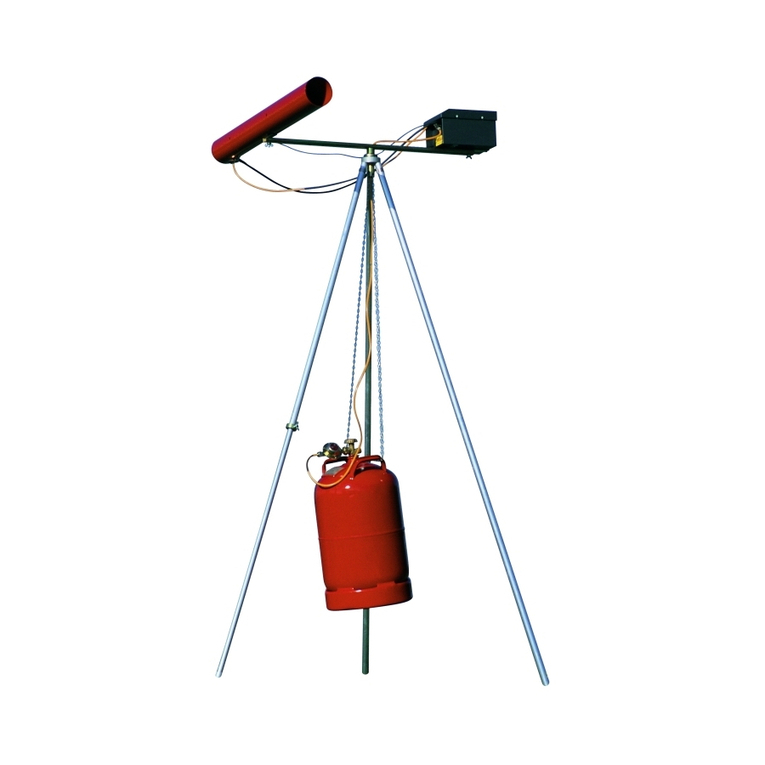
Purivox
Purivox Carousel Triplex V instruction manual
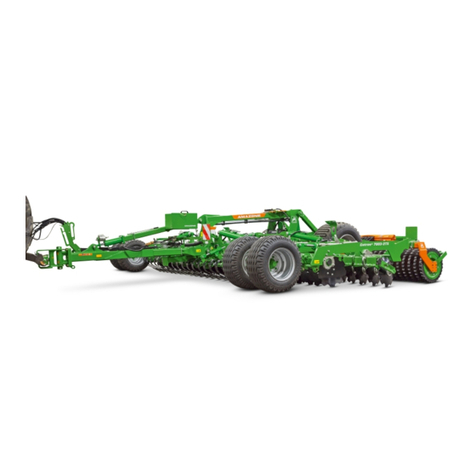
Amazone
Amazone Catros XL 7003-2TX operating manual

Hakki Pilke
Hakki Pilke 35 Falcon Instructions for assembly, operation and maintenance
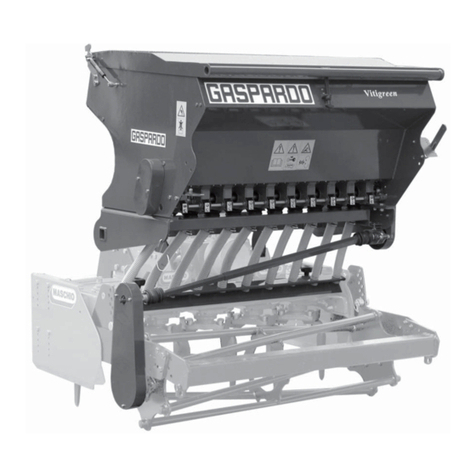
Gaspardo
Gaspardo VITIGREEN Use and maintenance
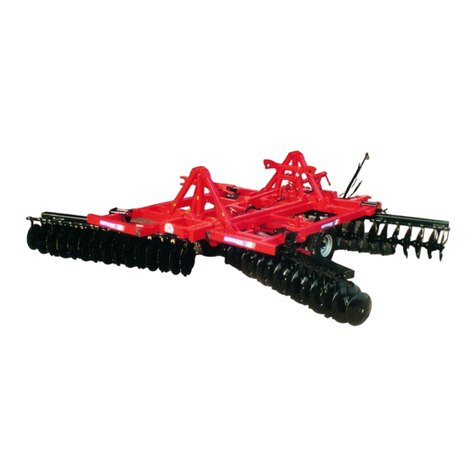
Quivogne
Quivogne APX-RS Operating, Maintenance and Spare Parts Manual
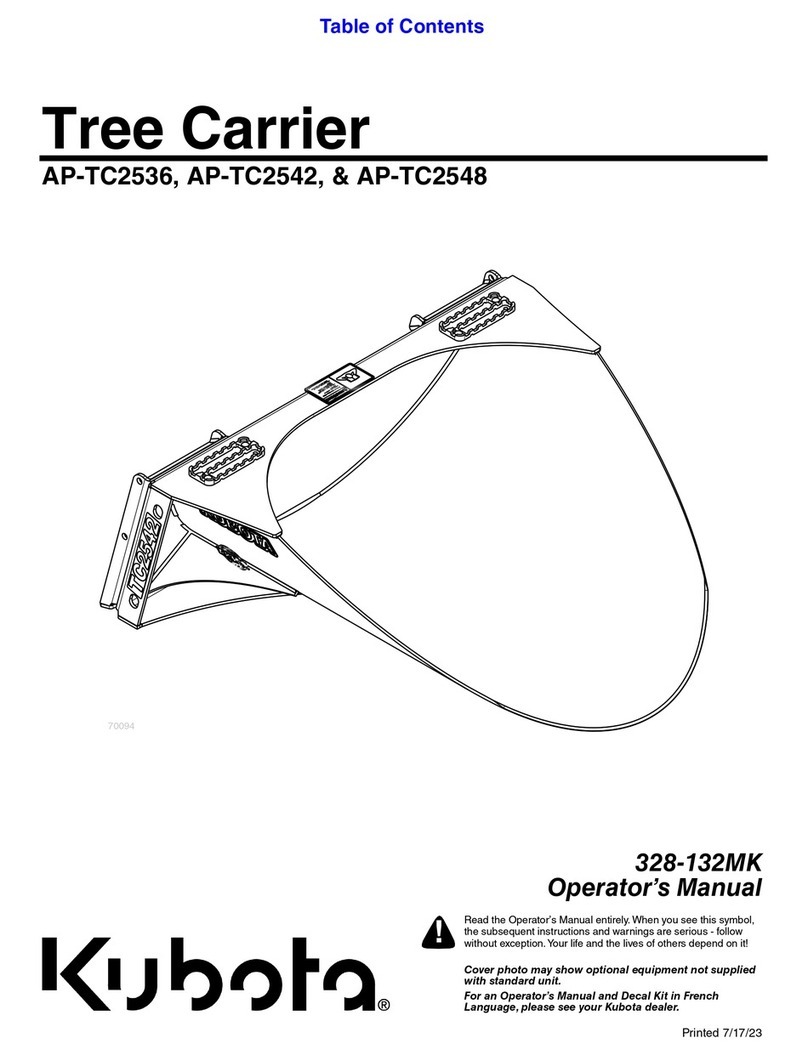
Kubota
Kubota AP-TC2536 Operator's manual
